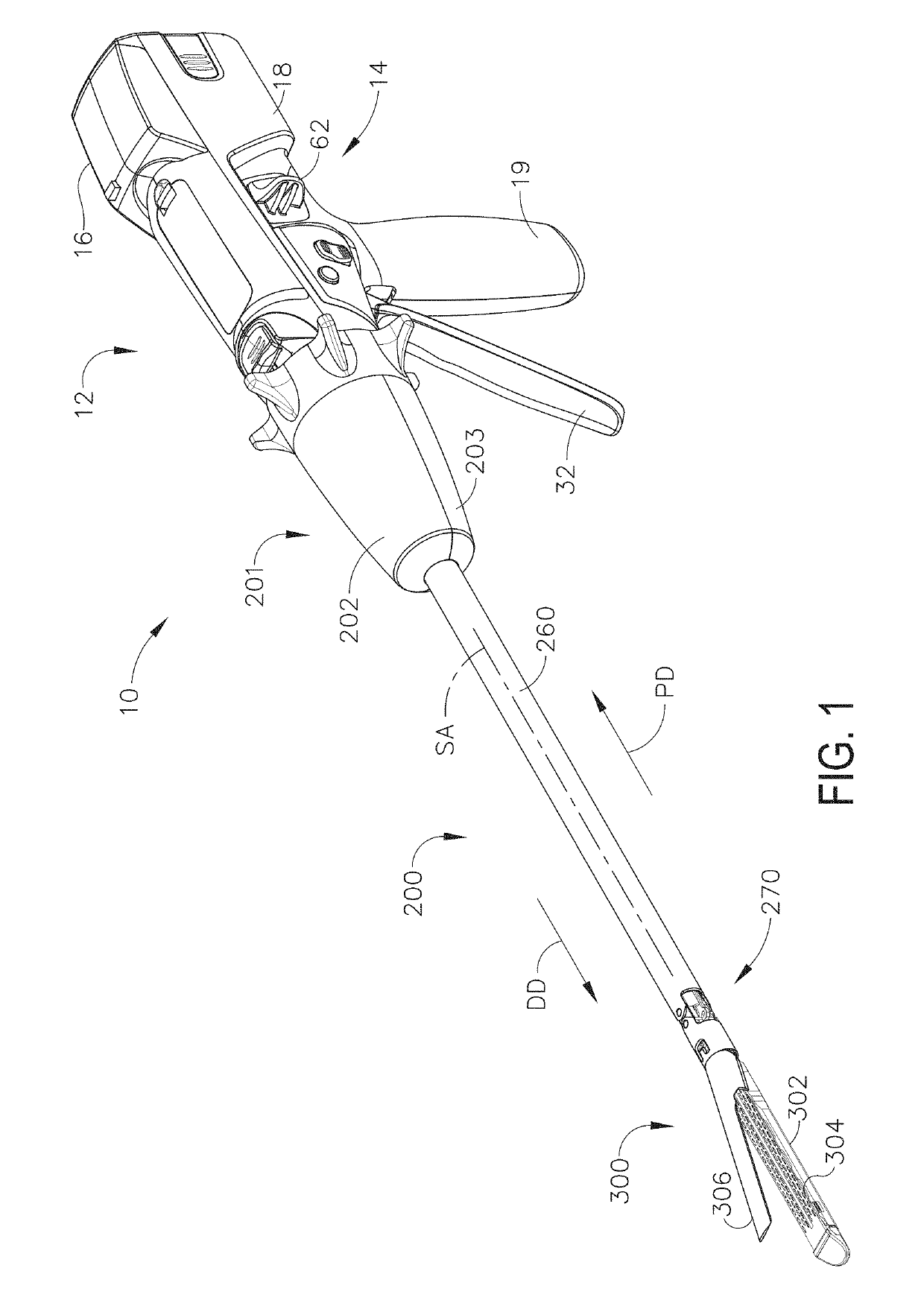Surgical instrument with detection sensors
a technology of detection sensors and surgical instruments, applied in the field of surgical instruments, can solve the problems of impede the surgeon's ability to properly identify all the materials or structures present at the surgical site, and it is difficult to visually inspect the differences between healthy and diseased tissu
- Summary
- Abstract
- Description
- Claims
- Application Information
AI Technical Summary
Benefits of technology
Problems solved by technology
Method used
Image
Examples
Embodiment Construction
[0139]Applicant of the present application owns the following patent applications that were filed on Apr. 15, 2016, and which are each herein incorporated by reference in their respective entireties:
[0140]U.S. patent application Ser. No. 15 / 130,575, entitled STAPLE FORMATION DETECTION MECHANISMS, now U.S. Patent Application Publication No. 2017 / 0296189;
[0141]U.S. patent application Ser. No. 15 / 130,588, entitled SURGICAL INSTRUMENT WITH IMPROVED STOP / START CONTROL DURING A FIRING MOTION, now U.S. Patent Application Publication No. 2017 / 0296179;
[0142]U.S. patent application Ser. No. 15 / 130,595, entitled SURGICAL INSTRUMENT WITH ADJUSTABLE STOP / START CONTROL DURING A FIRING MOTION, now U.S. Patent Application Publication No. 2017 / 0296180;
[0143]U.S. patent application Ser. No. 15 / 130,566, entitled SURGICAL INSTRUMENT WITH MULTIPLE PROGRAM RESPONSES DURING A FIRING MOTION, now U.S. Patent Application Publication No. 2017 / 0296177;
[0144]U.S. patent application Ser. No. 15 / 130,571, entitled...
PUM
 Login to View More
Login to View More Abstract
Description
Claims
Application Information
 Login to View More
Login to View More - R&D
- Intellectual Property
- Life Sciences
- Materials
- Tech Scout
- Unparalleled Data Quality
- Higher Quality Content
- 60% Fewer Hallucinations
Browse by: Latest US Patents, China's latest patents, Technical Efficacy Thesaurus, Application Domain, Technology Topic, Popular Technical Reports.
© 2025 PatSnap. All rights reserved.Legal|Privacy policy|Modern Slavery Act Transparency Statement|Sitemap|About US| Contact US: help@patsnap.com



